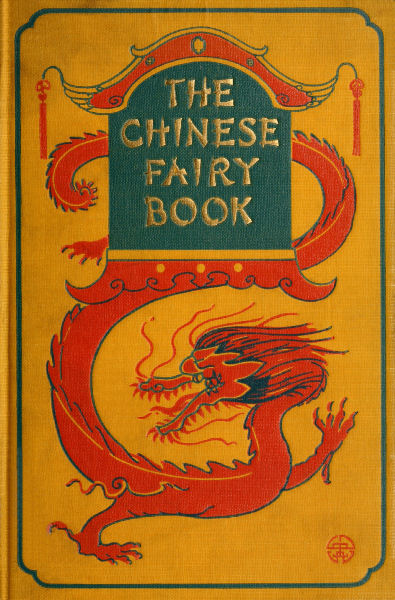
Illustrator: George W. Hood
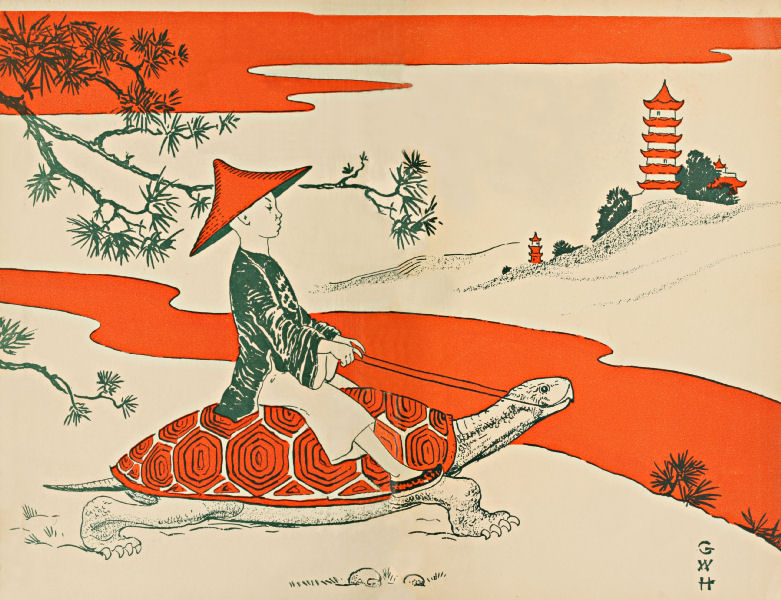
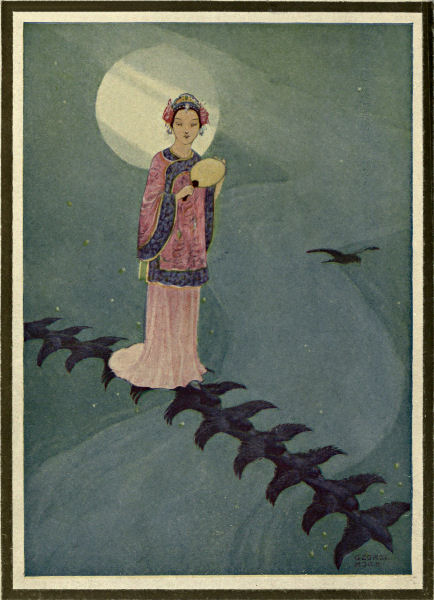
“THE CROWS COME FLYING AND FORM A BRIDGE OVER WHICH THE WEAVING MAIDEN CROSSES THE SILVER RIVER.”
“BESIDE IT STOOD A CASSIA-TREE.”
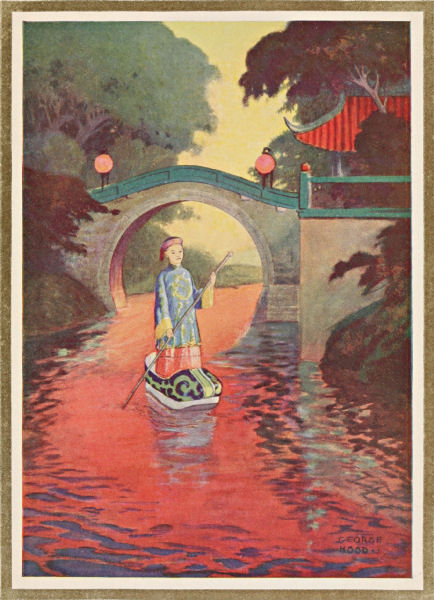
“‘AND I CROSSED THE WATER ON THE SHOE.’”
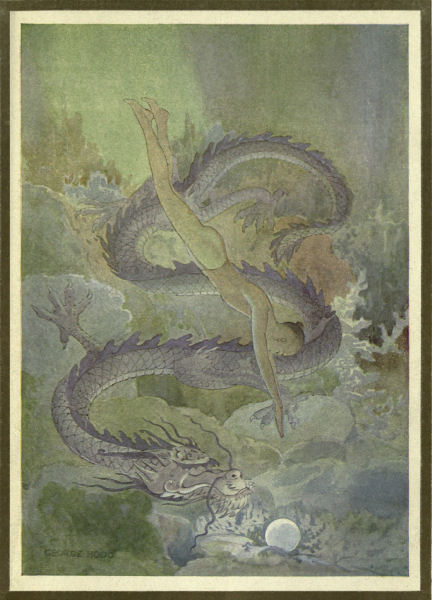
“A FISHERBOY DIVED INTO THE WATER AND BROUGHT UP A PEARL FROM BENEATH THE CHIN OF A BLACK DRAGON.”
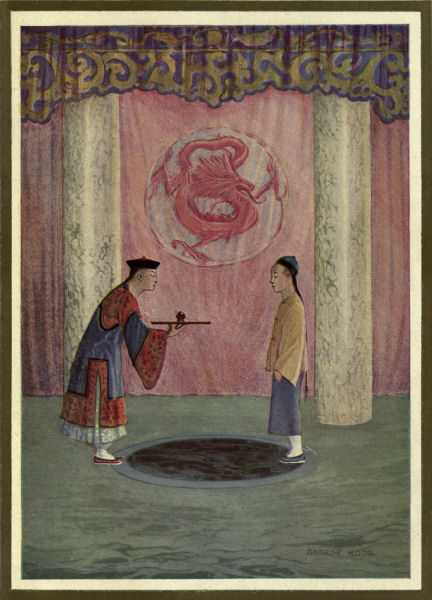
“TSIAN TANG BROUGHT OUT A PLATTER OF RED AMBER ON WHICH LAY A CARBUNCLE.”
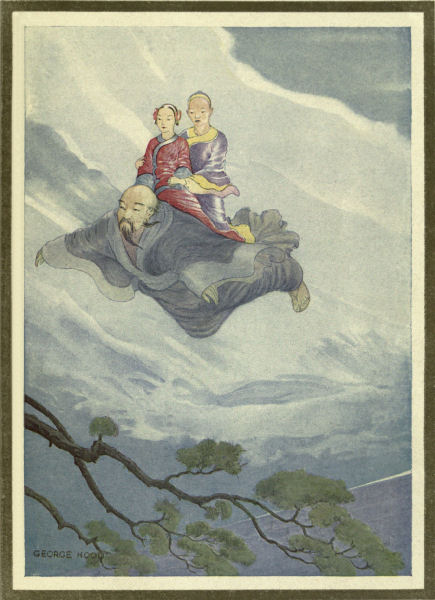
THEN HE TOOK HIS MASTER AND ROSE-RED UPON HIS BACK AND FLEW WITH THEM OVER THE STEEP WALLS.”
THE ANCIENT MAN
ONCE upon a time there was a man named Huang An. He must have been well over eighty and yet he looked like a youth. He lived on cinnabar and wore no clothing. Even in winter he went about without garments. He sat on a tortoise three feet long. Once he was asked: “About how old might this tortoise be?” He answered: “When Fu Hi first invented fish-nets and eel-pots he caught this tortoise and gave it to me. And since then I have worn its shield quite flat sitting on it. The creature dreads the radiance of the sun and moon, so it only sticks its head out of its shell once in two thousand years. Since I have had the beast, it has already stuck its head out five times.” With these words he took his tortoise on his back and went off. And the legend arose that this man was ten thousand years old.
Note: Cinnabar is frequently used in the preparation of the elixir of life (comp. No. 30). Fu Hi is “the life-breeding breath.” Tortoises live to a great age.
LAOTSZE
LAOTSZE is really older than heaven and earth put together. He is the Yellow Lord or Ancient, who created this world together with the other four. At various times he has appeared on earth, under various names. His most celebrated incarnation, however, is that of Laotsze, “The Old Child,” which name he was given because he made his appearance on earth with white hair.
He acquired all sorts of magic powers by means of which he extended his life-span. Once he hired a servant to do his bidding. He agreed to give him a hundred pieces of copper daily; yet he did not pay him, and finally he owed him seven million, two hundred thousand pieces of copper. Then he mounted a black steer and rode to the West. He wanted to take his servant along. But when they reached the Han-Gu pass, the servant refused to go further, and insisted on being paid. Yet Laotsze gave him nothing.
When they came to the house of the guardian of the pass, red clouds appeared in the sky. The guardian understood this sign and knew that a holy man was drawing near. So he went out to meet him and took him into his house. He questioned him with regard to hidden knowledge, but Laotsze only stuck out his tongue at him and would not say a word. Nevertheless, the guardian of the pass treated him with the greatest respect in his home. Laotsze’s servant told the servant of the guardian that his master owed him a great deal of money, and begged the latter to put in a good word for him. When the guardian’s servant [74]heard how large a sum it was, he was tempted to win so wealthy a man for a son-in-law, and he married him to his daughter. Finally the guardian heard of the matter and came to Laotsze together with the servant. Then Laotsze said to his servant: “You rascally servant. You really should have been dead long ago. I hired you, and since I was poor and could give you no money, I gave you a life-giving talisman to eat. That is how you still happen to be alive. I said to you: ‘If you will follow me into the West, the land of Blessed Repose, I will pay you your wages in yellow gold. But you did not wish to do this.’” And with that he patted his servant’s neck. Thereupon the latter opened his mouth, and spat out the life-giving talisman. The magic signs written on it with cinnabar, quite fresh and well-preserved, might still be seen. But the servant suddenly collapsed and turned into a heap of dry bones. Then the guardian of the pass cast himself to earth and pleaded for him. He promised to pay the servant for Laotsze and begged the latter to restore him to life. So Laotsze placed the talisman among the bones and at once the servant came to life again. The guardian of the pass paid him his wages and dismissed him. Then he adored Laotsze as his master, and the latter taught him the art of eternal life, and left him his teachings, in five thousand words, which the guardian wrote down. The book which thus came into being is the Tao Teh King, “The Book of the Way and Life.” Laotsze then disappeared from the eyes of men. The guardian of the pass however, followed his teachings, and was given a place among the immortals.
Note: The Taoists like to assert that Laotsze’s journey to the West was undertaken before the birth of Buddha, who, according to many, is only a reincarnation of Laotsze. The guardian of the [75]Han-Gu pass is mentioned by the name of Guan Yin Hi, in the Lia Dsi and the Dschuang Dsi.
Note: The Taoists like to assert that Laotsze’s journey to the West was undertaken before the birth of Buddha, who, according to many, is only a reincarnation of Laotsze. The guardian of the [75]Han-Gu pass is mentioned by the name of Guan Yin Hi, in the Lia Dsi and the Dschuang Dsi.
http://www.gutenberg.org/files/29939/29939-h/29939-h.htm
The Project Gutenberg EBook of The Chinese Fairy Book, by Various
This eBook is for the use of anyone anywhere at no cost and with almost no restrictions whatsoever.
You may copy it, give it away or re-use it under the terms of the Project Gutenberg License included with this eBook or online at www.gutenberg.net
Title: The Chinese Fairy Book Author: Various
Editor: R. Wilhelm
Illustrator: George W. Hood
Translator: Frederick H. Martens Release Date: September 8, 2009 [EBook #29939] Language: English Character set encoding: ISO-8859-1 *** START OF THIS PROJECT GUTENBERG EBOOK THE CHINESE FAIRY BOOK *** Produced by David Edwards, Sam W. and the Online Distributed Proofreading Team at http://www.pgdp.net (This file was produced from images generously made available by The Internet Archive)
Source:
http://www.gutenberg.org/files/29939/29939-h/29939-h.htm
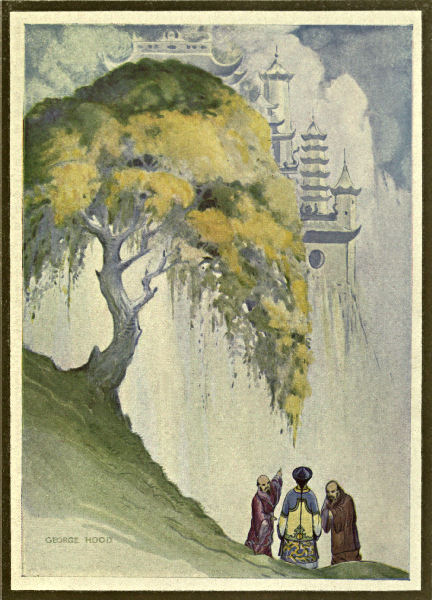
No comments:
Post a Comment